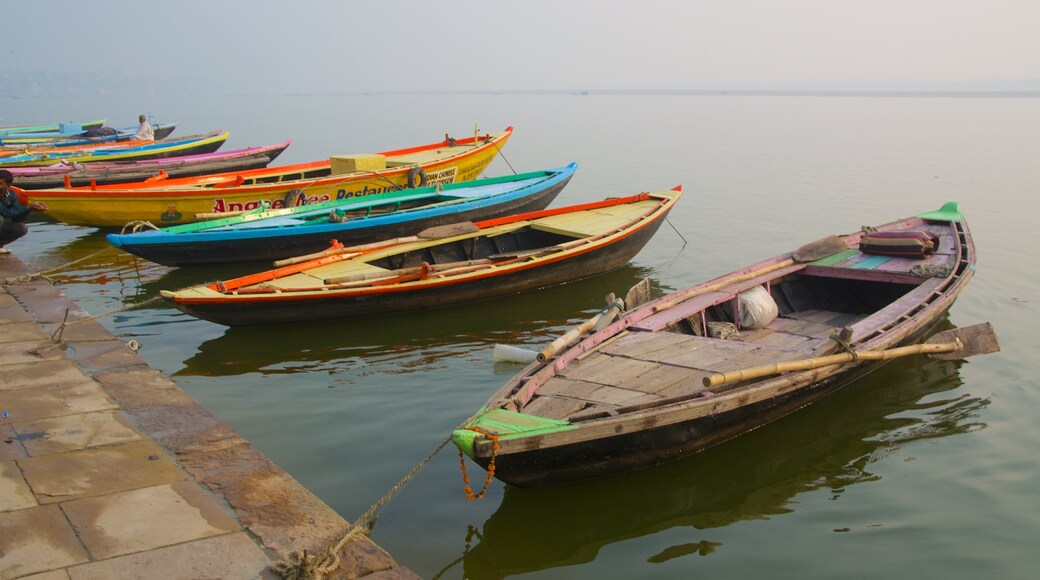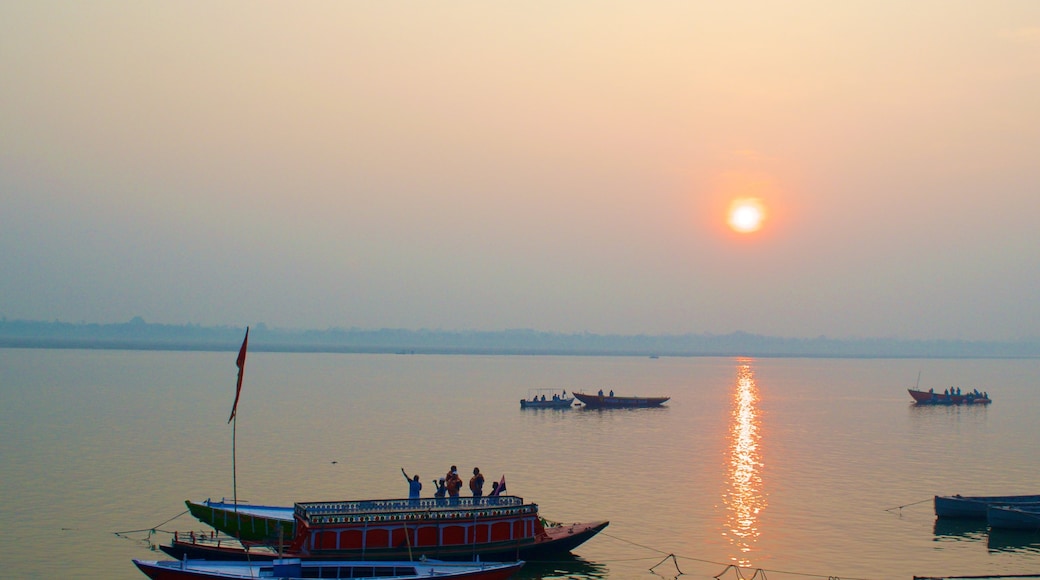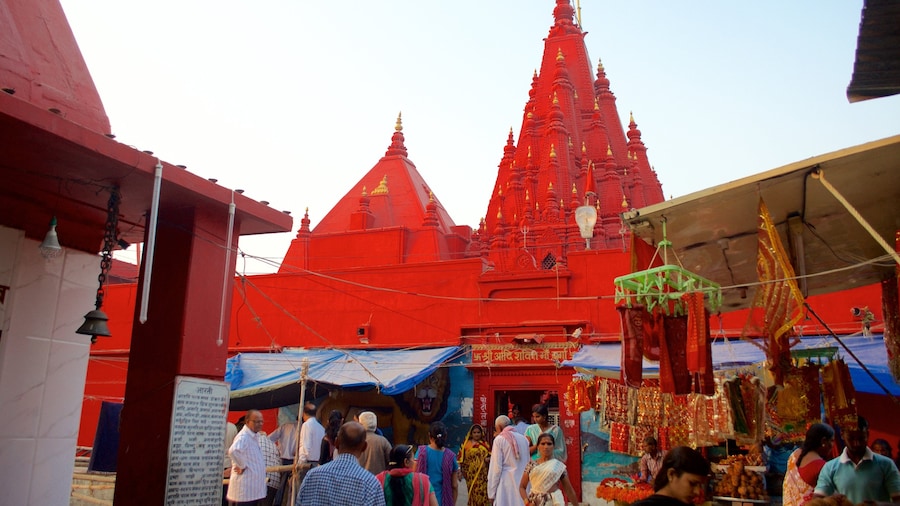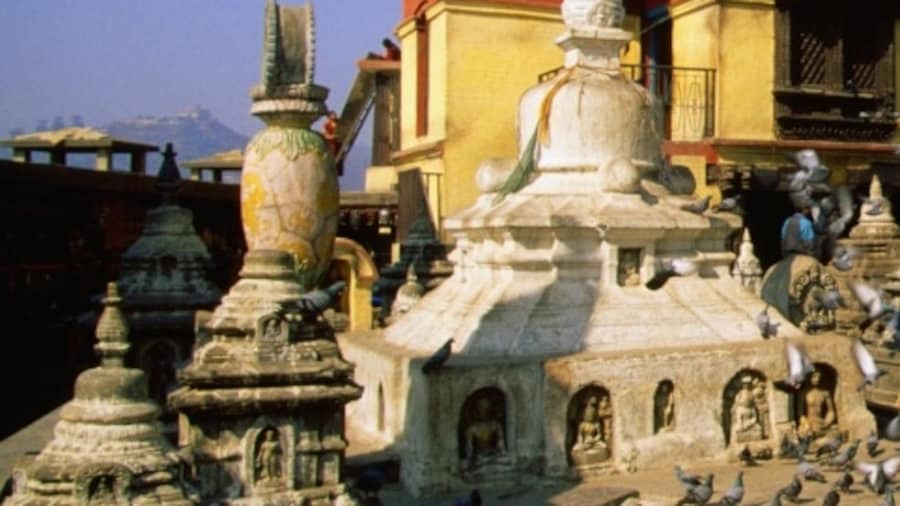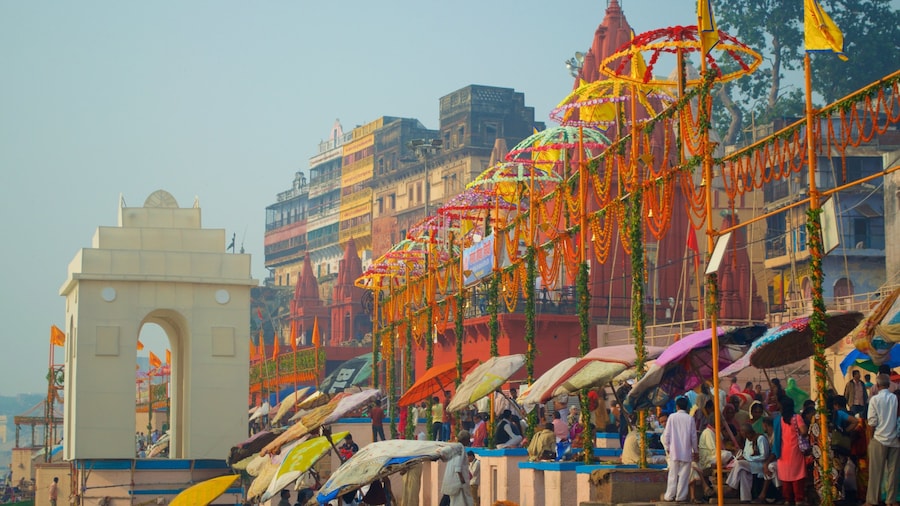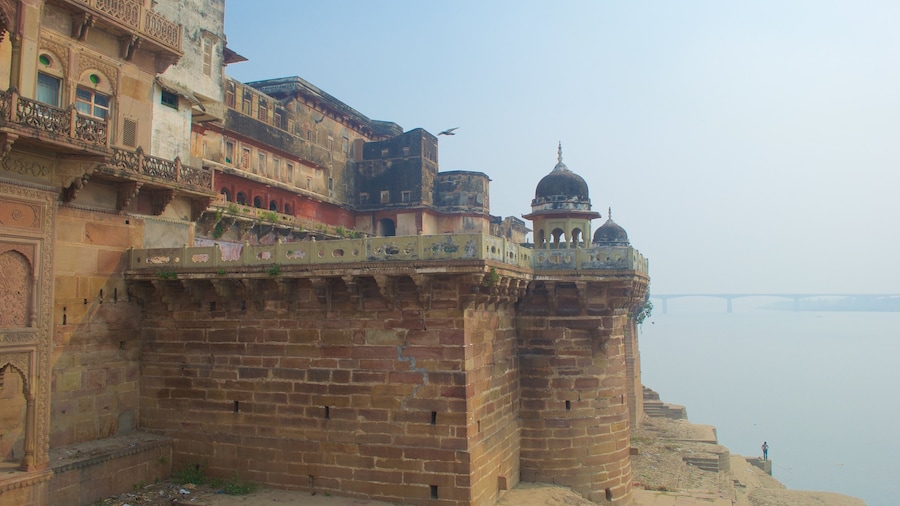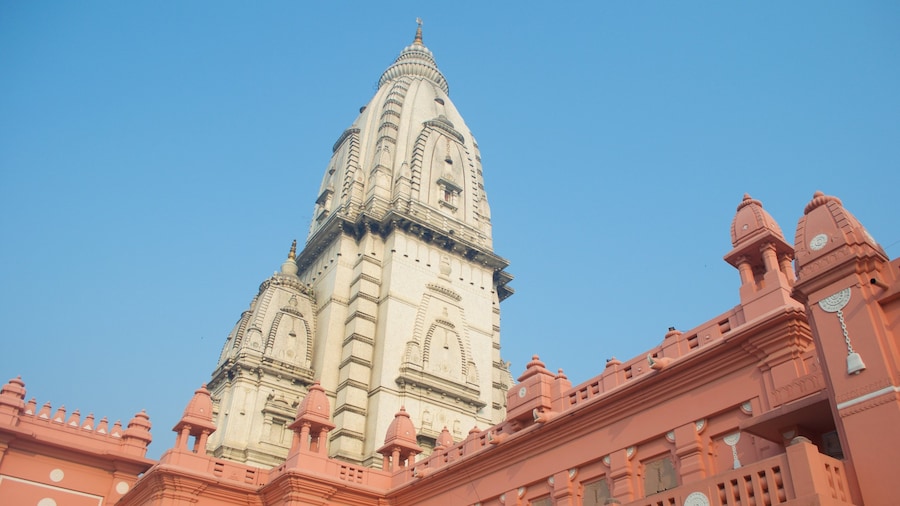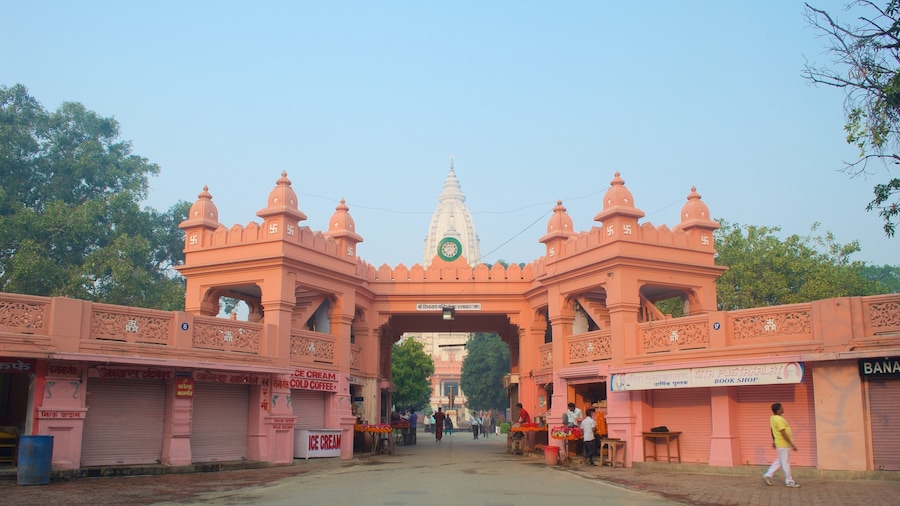Watch pilgrims bathe in sacred water, see holy men perform ancient rituals and visit the former home of a great Indian poet.
Varanasi’s ghats are an essential part of the city’s culture. Tulsi Ghat is one of the most important, yet most relaxed. See devotees and sadhus (holy men) carrying out religious practices and be part of centuries-old festival traditions. Tulsi Ghat takes its name from the 16th-century poet Goswami Tulsidas, who wrote the epic poem Ramcharitmanas while in Varanasi. Today, relics of the poet lie scattered around the ghat.
The steps of Tulsi Ghat are a great place to observe the captivating activity that unfolds on the banks of the Ganges River. Throughout the day, pilgrims, gaily dressed sadhus and pandits (Hindu scholars) arrive to cleanse themselves in the holy river, pray and give offerings. Spot women washing clothes and children jumping into the water from the platforms. Visit at dawn to watch a scenic sunrise and see pilgrims carrying out their morning prayers.
Look for the small house at the ghat, which is the former home of Goswami Tulsidas. It contains artifacts relating to the life of the celebrated poet. Among these are a pair of wooden clogs and a well-preserved idol of the Hindu monkey god Hanuman.
Go to Lolark Kund, a sacred water tank behind the steps of the ghat. Devotees come here to worship Lolark Aditya. Many believe that bathing in the water will bring long life to sons and cure skin afflictions. Join pilgrims for the Lolark Shasthi festival, when hundreds of woman descend upon the holy water and pay homage to Surya, the Hindu sun god. The festival takes place in August or September.
The ghat is south of Varanasi’s city center, about a 10-minute drive from busy Godowlia Chowk. Enjoy a scenic walk along the waterfront from Dasaswamedh Ghat during periods of low water levels. Be sure to visit nearby Assi Ghat, a favorite starting point for boat trips along the Ganges River.
Tulsi Ghat is busy at all times of the day, although at its liveliest during morning and evening prayer time. When taking photographs, be respectful of those performing religious rituals.

